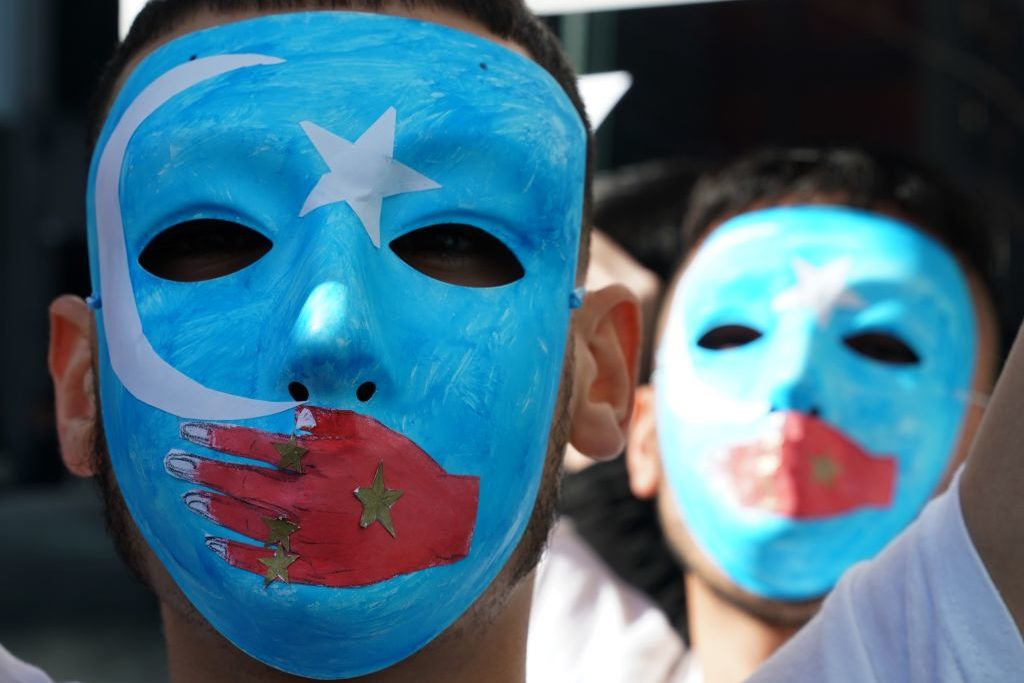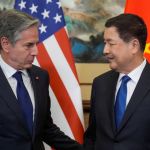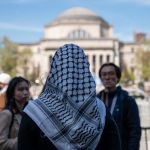The Reuters photo could be mistaken for a shot of one of America’s ‘supermax’ prisons, the ones where the most dangerous criminals are held. An endless green security fence, topped with coils of barbed wire, punctuated by soaring octagonal guard towers with 360-degree views, all fronting what looks like a massive concrete wall or side of a building. Yet the Chinese workers walking outside the fence give away the truth. The picture is not of a US prison, but rather a Chinese ‘re-education’ center in vast Xinjiang, in the country’s far west.
According to research by the Australian Strategic Policy Institute, there are 28 such massive detention camps in Xinjiang, most built within just the last several years. In them is believed to be up to one million ethnic Uighurs, a Turkic-speaking minority in China that is overwhelmingly Muslim. After months of denying the rumors, Chinese government officials confirmed that the camps exist, asserting that they are part of a broader policy to ‘de-radicalize’ Uighur terrorists and their sympathizers. In reality, Beijing is waging a war on Islam, using paramilitary and policy power, along with new laws, to suppress Islam and turn its adherents into secularized Chinese citizens.
Islam came to China in the 7th century along with Silk Road trade. It coexisted largely peacefully with Chinese authority and other religions, yet the shifting borders of China’s far west meant that Chinese control over Muslim majority lands waxed and waned with different dynasties. With the expansion of the Qing dynasty into today’s Xinjiang, official repression of the Uighurs and of Islam became more regular, and an unstable state of affairs continued after the Chinese Communist Party took power in 1949 and Xinjiang was established as one of several ethnic-majority autonomous regions. Of the province’s 23 million people, the Uighurs comprised approximately 11 million. Another 10 million Muslim Hui, who have assimilated more into Chinese society, also live largely in the western and northern provinces of China.
Over the past decade, the repression of Islam has dramatically increased. In Beijing’s telling, the state is simply reacting to Islamic terrorists, purportedly allied with al-Qaeda, who have committed atrocities across the nation, knifing rail commuters and setting off a bomb in Tiananmen Square, the symbolic heart of Beijing. The terrorists’ main goal is independence for Xinjiang, and their attacks have increased as the state increased its grip over Xinjiang. Yet separatist feeling among Uighurs who are not terrorists seems to be as threatening to Beijing as actual radicals.
Beijing’s actions against Islam go far beyond mere counter-terrorism, however. Xinjiang essentially has become a police state with pervasive surveillance, and access for foreigners is strictly controlled. According to the independent non-profit Radio Free Asia, Chinese authorities demolished more than 5,000 mosques in 2016-17 alone. Since 2014, over one million Chinese have been relocated into Xinjiang to both proselytize secular values and report on ‘subversive’ behavior by Uighurs, which can include not watching state-run television. Men with beards have been forcibly shaven and women’s long skirts cut, while alcohol and tobacco have been forced onto the shelves of unwilling shopkeepers. More darkly, forced swabbing of Uighurs for DNA samples has been reportedly widespread, all apparently designed to create a massive database to better control the population. And then there are the re-education camps. Beijing has also begun to crack down on the better-integrated Muslim Hui community, which traditionally was allowed far more freedom to establish madrassas and operate mosques, indicating that this is a broader campaign against Islam itself.
Of course, the Chinese crackdown on religion is ecumenical, with Christian churches also being demolished, Catholic bishops appointed by Beijing, paramilitary control over Buddhist Tibet, and suppression of the Falun Gong sect. Communist China’s uneasy relationship with religion has only intensified under current leader Xi Jinping, as a new focus on loyalty and ethnic Han chauvinism has emerged.
Unlike other religions, though, Islam is a foreign policy problem for China as much as it is a domestic issue. Beijing’s fear of any links between its indigenous Muslim population and their brethren in Central Asia and the Middle East is a significant factor driving the current policy. The stepped-up Sinification of Xinjiang and other far western lands is designed as a bulwark to prevent any type of separatist movement from gaining traction. The success of any independence movement would in turn encourage Tibet, Taiwan, Hong Kong, and possibly other areas to agitate for further autonomy.
Moreover, control of China’s Muslim population is also seen as important to the success of the One Belt One Road policy, which passes through Islamic lands on its way to western Europe. Any effective resistance to Beijing’s increased presence as it strives to build infrastructure links throughout Eurasia could call into question the viability of the larger project.
Until recent months, Islamic governments were unusually quiet about Beijing’s crackdown. Chinese ally Pakistan made some muted calls last year for easing restrictions on Uighurs, but worry about the effect of any criticism would have on the $62 billion China-Pakistan Economic Corridor undoubtedly accounted for the tepid approach. Only at the beginning of this year did Turkey, led by the Islamist AK Party, call for China to close down its ‘concentration camps,’ in Ankara’s words.
Beijing’s unapologetic acknowledgment of its detention of Uighurs may spur further foreign criticism in coming months. That, in turn, is likely to lead to even harsher policies at home, so as to douse any potential hope among Uighurs that they will become a cause célèbre. Indeed, China is achieving a type of reverse infamy with its policy, as Brenton Tarrant, the New Zealand Christchurch shooter, who murdered 50 persons in two mosques in March, supposedly claimed that he was inspired by Beijing’s treatment of its Muslims.
With a history of over 1,300 years in China, it is unlikely that Islam will be extirpated entirely in the country. Yet Beijing’s ruthless willingness to use technology and force against largely powerless Muslim populations, while preventing foreigners from seeing much of what it is doing, means that the world may not know just how successful the Chinese state is in eradicating Islam until most of the fighting is done.


















